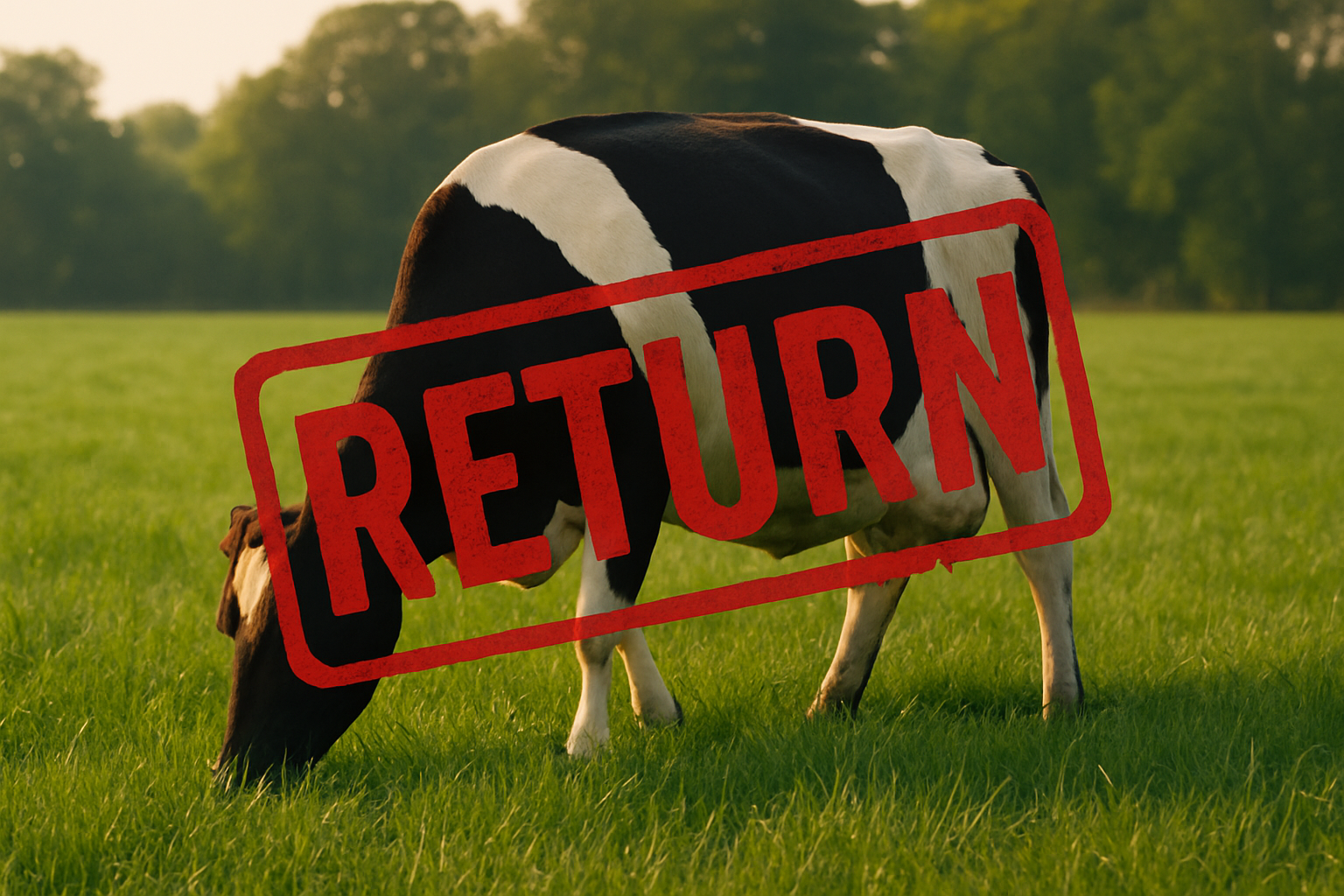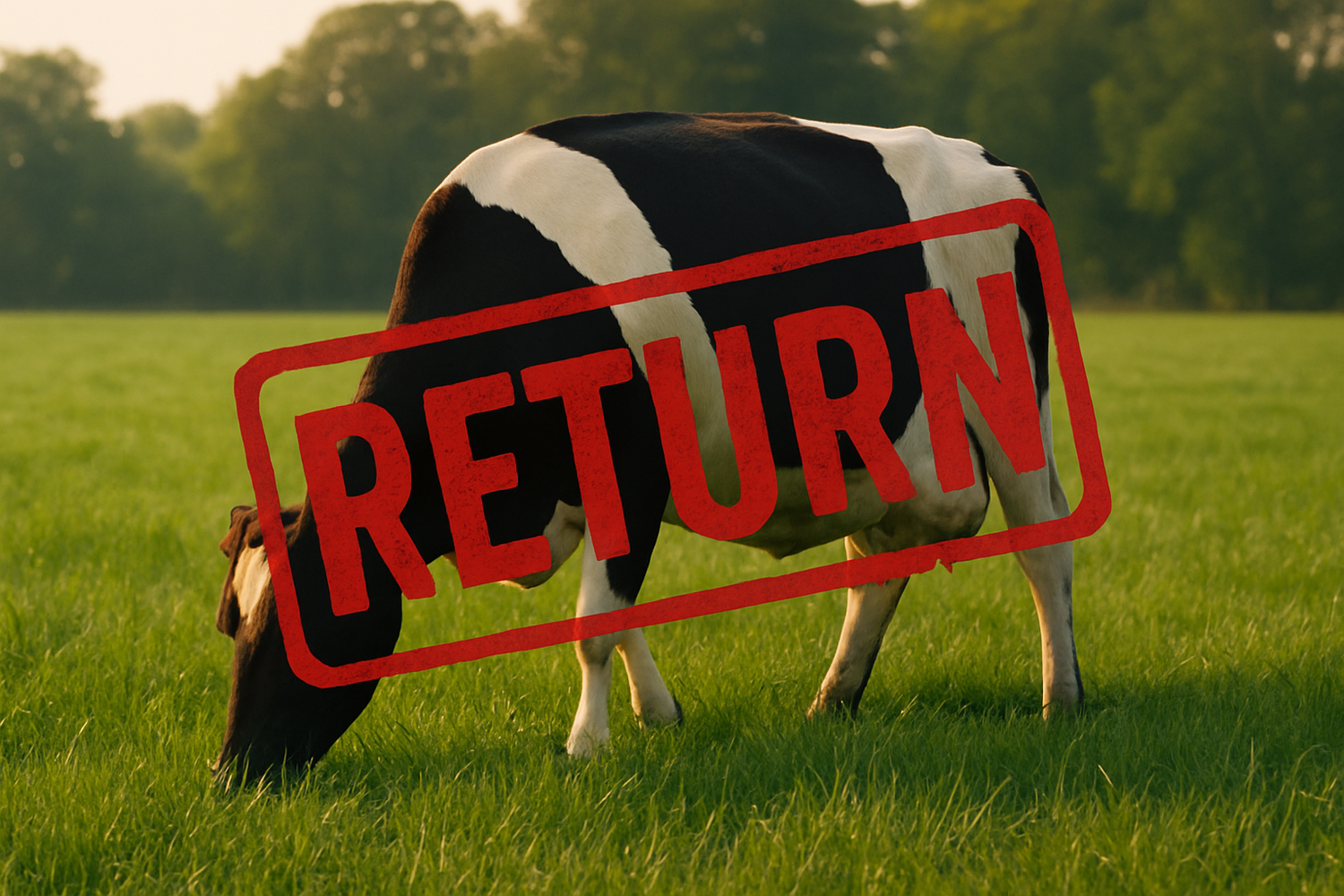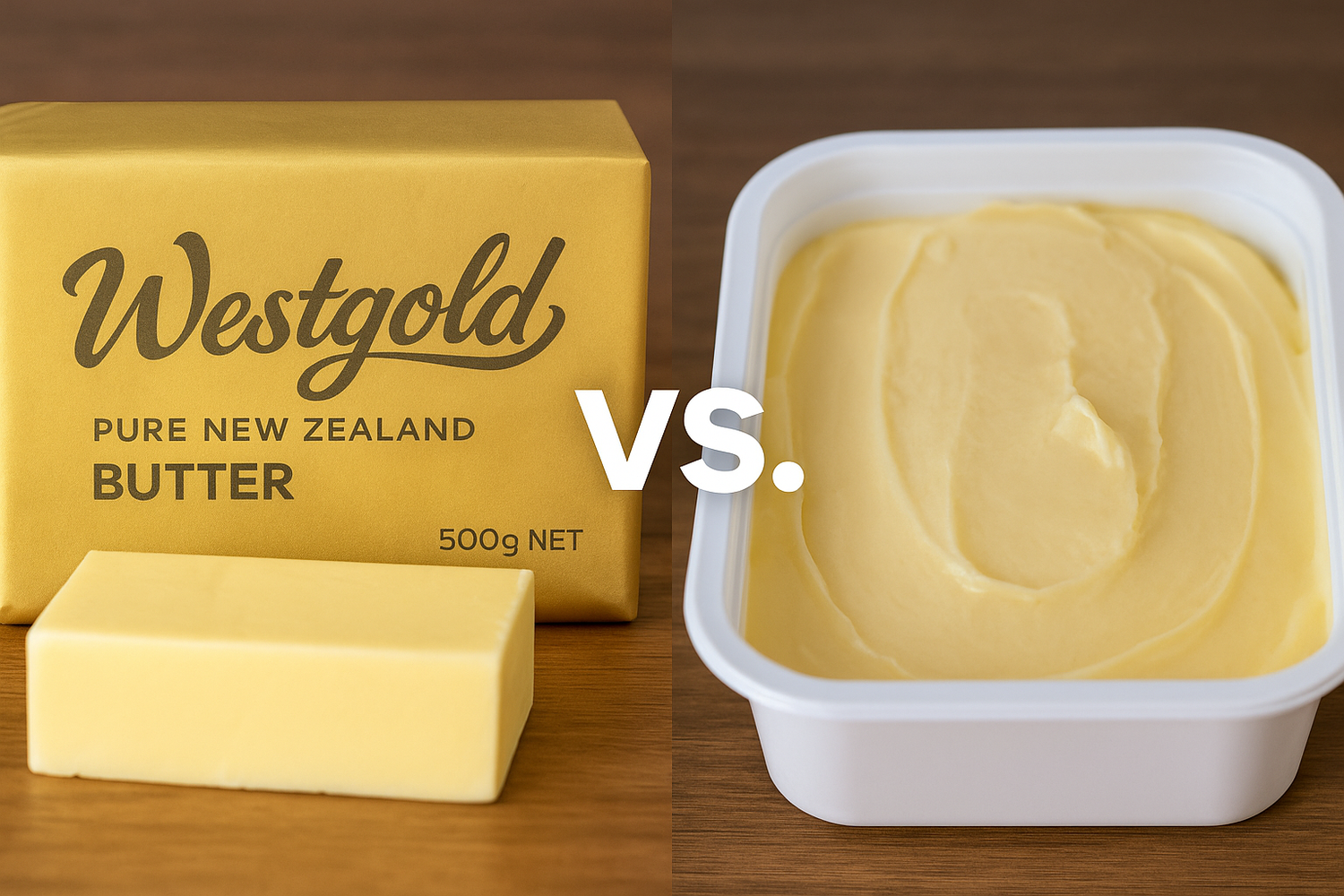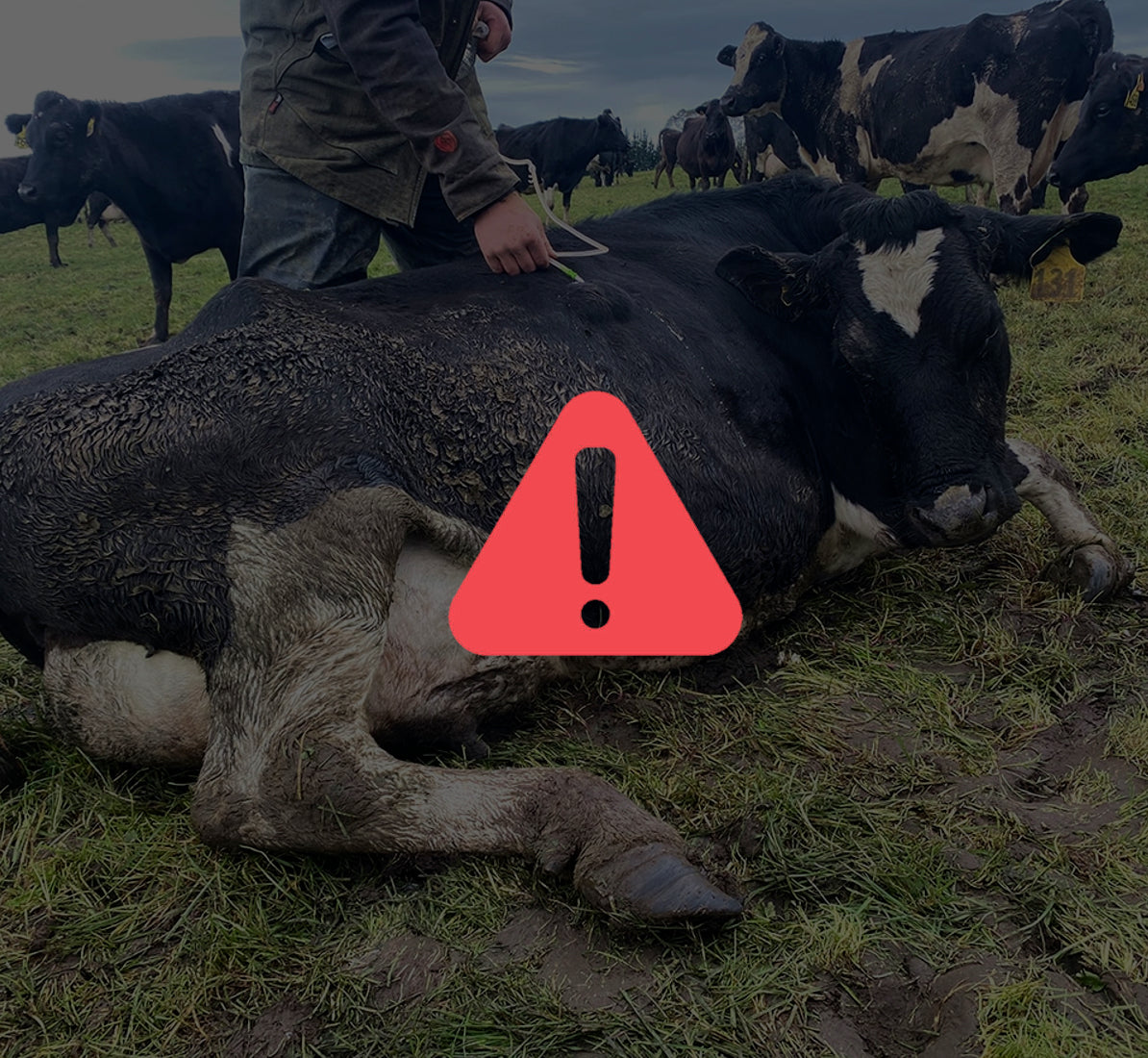Picture this:
You've navigated the gauntlet of winter feeding,
brought your girls through calving in good shape,
and now they're standing knee-deep in lush spring growth.
Feed covers are flush.
Udders are full.
AI is just around the corner.
Everything looks right.
But underneath...
that mint green paradise, there's a ticking time bomb
—and it's dismantling your mating success one embryo at a time, 10-16 days after conception, before you even know she was pregnant.
Here's what most farmers believe:
"Spring grass is the best time of year.
Plenty of feed = plenty of energy = cycling cows that hold."
It makes sense. More feed should equal better results. And visually? It checks out. Your cows look content. Rumens are full. The paddocks are thriving.
But here's where that logic falls apart:
Your spring pasture, the very feed you're relying on—is creating a perfect metabolic storm that's quietly sabotaging your mating results.

What's really happening in your spring paddocks
Walk any NZ dairy farm right now and this is what's actually happening beneath that explosive spring growth:
- Spring grass equals 30%+ crude protein (cows only need 18-20%)
- Elevated potassium from rapid growth sitting at 3.5-4.5%
-
Low dry matter often below 15%, and
- Insufficient readily fermentable carbohydrates to balance that protein overload
And here's where it compounds.
When dietary potassium levels climb above optimal ranges, mineral absorption becomes compromised.
High potassium interferes with the absorption of calcium and magnesium—critical minerals for reproductive success.
Your cows might be standing in paddocks testing high in minerals, but metabolically they're absorbing significantly less than what they need.
The antagonistic relationship between these minerals means that as one increases, the availability of others decreases dramatically.
So the feed looks right. The mineral levels look right—but the biochemistry is working against you.
The Urea time bomb
That excess nitrogen? It converts to urea.
Rising urea means your cows' livers are working overtime to detoxify at an enormous metabolic cost. You'll see it reflected in climbing milk urea levels on your milk docket.
But what you don't see is the blood urea climbing right alongside it.
And high blood urea is like setting off an atomic bomb on a developing embryo. It quite literally incinerates the embryo before you even know conception occurred.
Your cow cycles. Gets inseminated. Conceives. Then 10-16 days later, that embryo is obliterated by the toxic urea environment her spring diet created.
The hidden energy crisis
And there's another layer to this that nobody's talking about.
You've got all this beautiful spring grass, so naturally you turn down the dial on your in-shed feeder, removing that concentrated energy source. But that creates a sudden energy shift.
Think of it like a woman trying to sustain early pregnancy on a keto diet—plenty of protein, but the body's screaming for concentrated energy during those critical early weeks. Your cows are in the same bind.
Spring pasture has such low dry matter percentage that your cows literally can't physically eat enough wet weight to meet their energy requirements, even with full rumens.
They look full. They appear satisfied. But metabolically? They're running on empty in the ways that matter most for cycling and conception.
Energy is the first box we have to tick for successful reproduction. Before protein. Before minerals. Energy. And right now, most farmers are unknowingly creating an energy deficit at the exact moment their cows need it most.
The science is clear and our farmer accounts back it up.
Trevor Dawson dropped his MT rate from 20% to 14%. That's an extra $14,400 on a 400-cow herd.
Jason Turner's 6wk rate jumped from 61% to 91%, a 30-point leap worth around $36,000. Not from better genetics. From precision nutrition.
Alan Bennett brought mating forward by 10 days. Better calving pattern, more milk in peak payout months, compound gains season after season. Alan also boosted his production from 376kgMS up to 501kgMS.
These aren't farmers with bigger budgets. They're farmers who stopped accepting "industry average" as the ceiling and started dialling in their nutrition.
You've done everything right through winter. Got them through calving in good shape. Set that bar high. Then AI starts, and suddenly you're dealing with higher-than-expected return rates.
Cows that should be holding but aren't. Standing in the yard watching prime breeding stock cycle back, knowing full well that every MT at the end of mating is money walking out the gate. It's the kind of frustration that keeps you up at night doing the mental math.
A cow that doesn't get in calf in the first 3 weeks shifts her calving date back. That means she's calving later next season, producing less milk in peak payout months, and you're right back in the same cycle, but now with even less time to work with. It compounds.
Every percentage point drop in 6wk in-calf rate is another season of lower production and higher replacement costs.
The 2023-24 season saw some positive movement in NZ's average stats. The 6wk in-calf rate rose to 69.3%, MT rate improved to 15% and for the first time—we cracked 400kgMS.
Well done NZ. We're trending in the right direction—but there's still so much more on offer.
Wouldn't it be great if industry averages were more like 85-90% 6wk in calf, 6-7% MT and 550+ kgMS? Ruminate reckons it's achievable. And the farmers who've done it? They're proving it every season.
Your 3 point action plan
If you want to maintain the foundation you built through transition and calving, you need to manage three critical things during these next 3-4 weeks:
-
Energy balance - watch for sudden feed changes and metabolic shocks
-
Protein management - test your pasture and monitor blood urea levels
-
Mineral balance - high potassium blocks absorption, so your cows might be eating minerals but absorbing next to nothing
(Don't ignore trace elements and vitamins—they play a crucial role too.)
The next best move...
Test your pasture.
Understand what's actually in their feed, not what you think is there. That data gives you the power to make confident, precise decisions. We're not talking about throwing more palm kernel at the problem or blindly adding supplements. We're talking about precision. Balancing what they're getting from pasture with what they actually need for optimal cycling and conception.
This stage of the season isn't about adding work. It's about preventing loss.

Now, picture this instead..
Imagine walking into the shed 3 weeks into mating and the return rates are low. Really low.
Your cows are cycling tight,
holding to first service,
and you're watching that 6wk in-calf rate climb past 80%, then 85%,
...then nudging 90%.
You're not chasing MT cows.
You're not doing the mental math on replacement costs.
You're calving a tight, early pattern next season.
More milk in peak payout.
Higher per-cow production.
Less stress.
More profit.
—that's what precision nutrition delivers.
And it starts with one simple step:
Testing your pasture while there's still time to make adjustments before AI starts.
We can run a comprehensive analysis and show you exactly where the gaps are between what your cows are eating and what they actually need. Data. And a clear pathway forward.
Because accepting that fertility "just is what it is" leaves too much money on the table.
You've set a high bar through winter and calving. Let's make sure it stays there.
Book : Free Nutrition Session with Ruminant Nutrition Specialist





